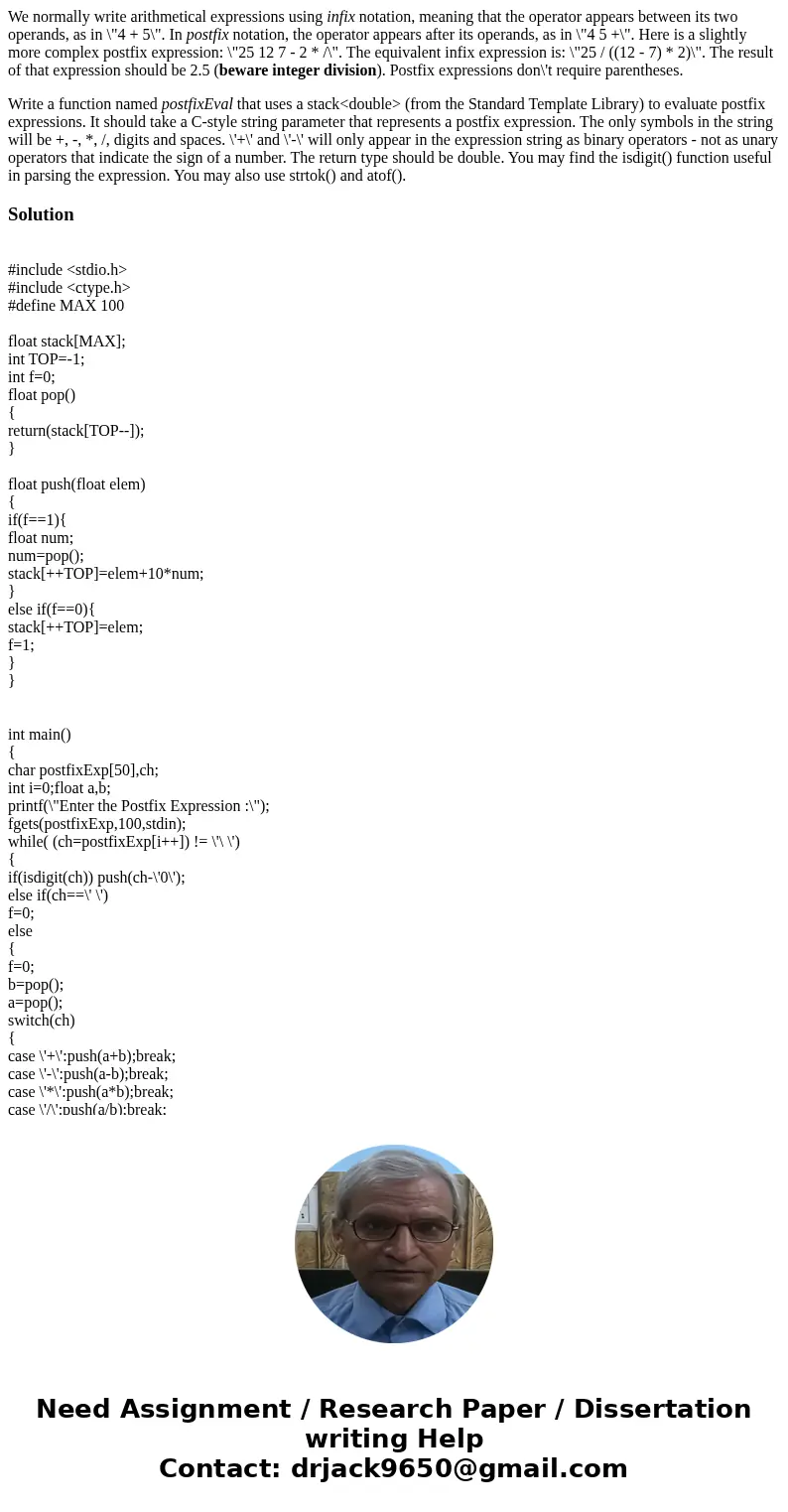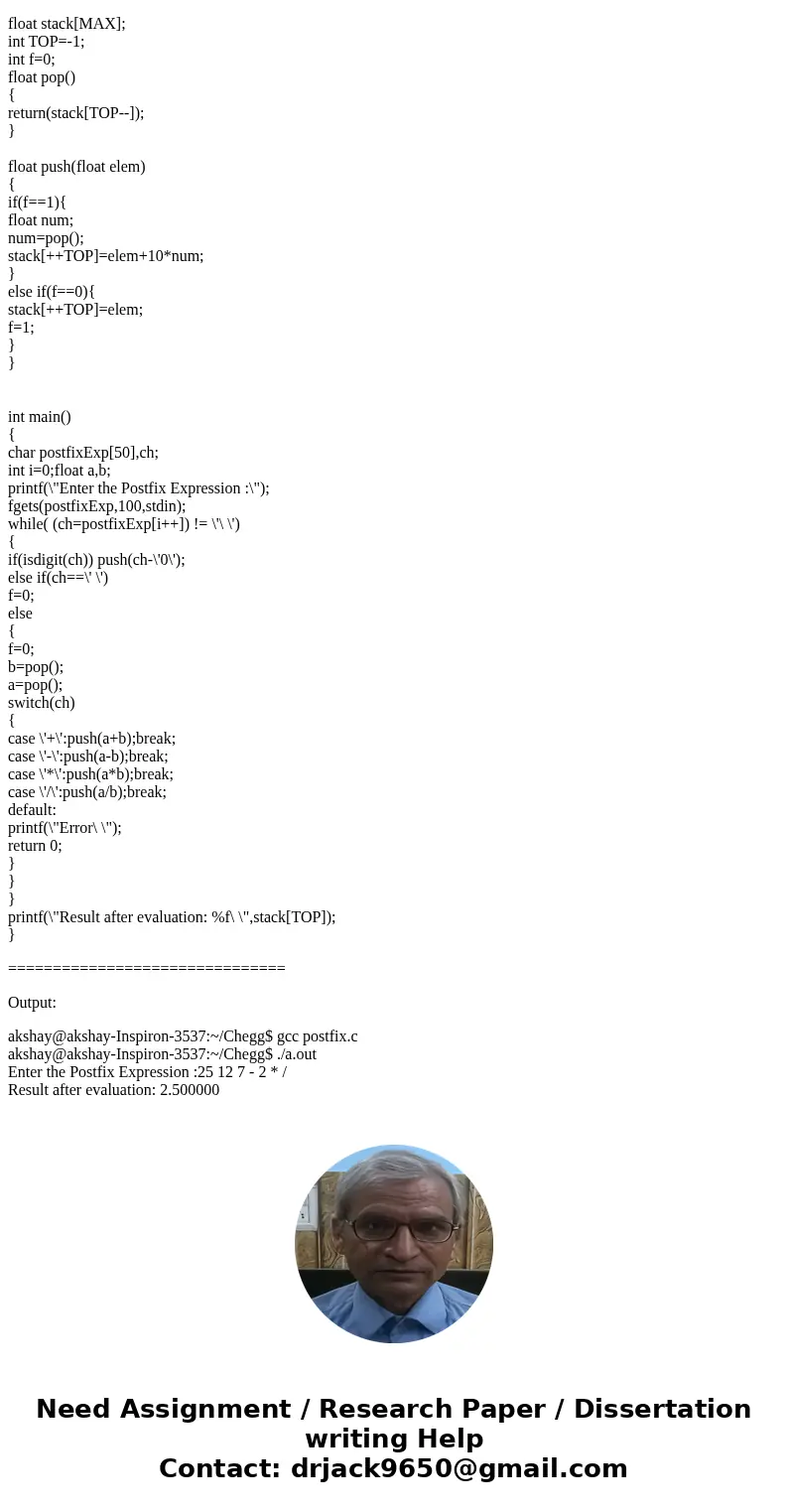We normally write arithmetical expressions using infix notat
We normally write arithmetical expressions using infix notation, meaning that the operator appears between its two operands, as in \"4 + 5\". In postfix notation, the operator appears after its operands, as in \"4 5 +\". Here is a slightly more complex postfix expression: \"25 12 7 - 2 * /\". The equivalent infix expression is: \"25 / ((12 - 7) * 2)\". The result of that expression should be 2.5 (beware integer division). Postfix expressions don\'t require parentheses.
Write a function named postfixEval that uses a stack<double> (from the Standard Template Library) to evaluate postfix expressions. It should take a C-style string parameter that represents a postfix expression. The only symbols in the string will be +, -, *, /, digits and spaces. \'+\' and \'-\' will only appear in the expression string as binary operators - not as unary operators that indicate the sign of a number. The return type should be double. You may find the isdigit() function useful in parsing the expression. You may also use strtok() and atof().
Solution
#include <stdio.h>
#include <ctype.h>
#define MAX 100
float stack[MAX];
int TOP=-1;
int f=0;
float pop()
{
return(stack[TOP--]);
}
float push(float elem)
{
if(f==1){
float num;
num=pop();
stack[++TOP]=elem+10*num;
}
else if(f==0){
stack[++TOP]=elem;
f=1;
}
}
int main()
{
char postfixExp[50],ch;
int i=0;float a,b;
printf(\"Enter the Postfix Expression :\");
fgets(postfixExp,100,stdin);
while( (ch=postfixExp[i++]) != \'\ \')
{
if(isdigit(ch)) push(ch-\'0\');
else if(ch==\' \')
f=0;
else
{
f=0;
b=pop();
a=pop();
switch(ch)
{
case \'+\':push(a+b);break;
case \'-\':push(a-b);break;
case \'*\':push(a*b);break;
case \'/\':push(a/b);break;
default:
printf(\"Error\ \");
return 0;
}
}
}
printf(\"Result after evaluation: %f\ \",stack[TOP]);
}
===============================
Output:
akshay@akshay-Inspiron-3537:~/Chegg$ gcc postfix.c
akshay@akshay-Inspiron-3537:~/Chegg$ ./a.out
Enter the Postfix Expression :25 12 7 - 2 * /
Result after evaluation: 2.500000


 Homework Sourse
Homework Sourse